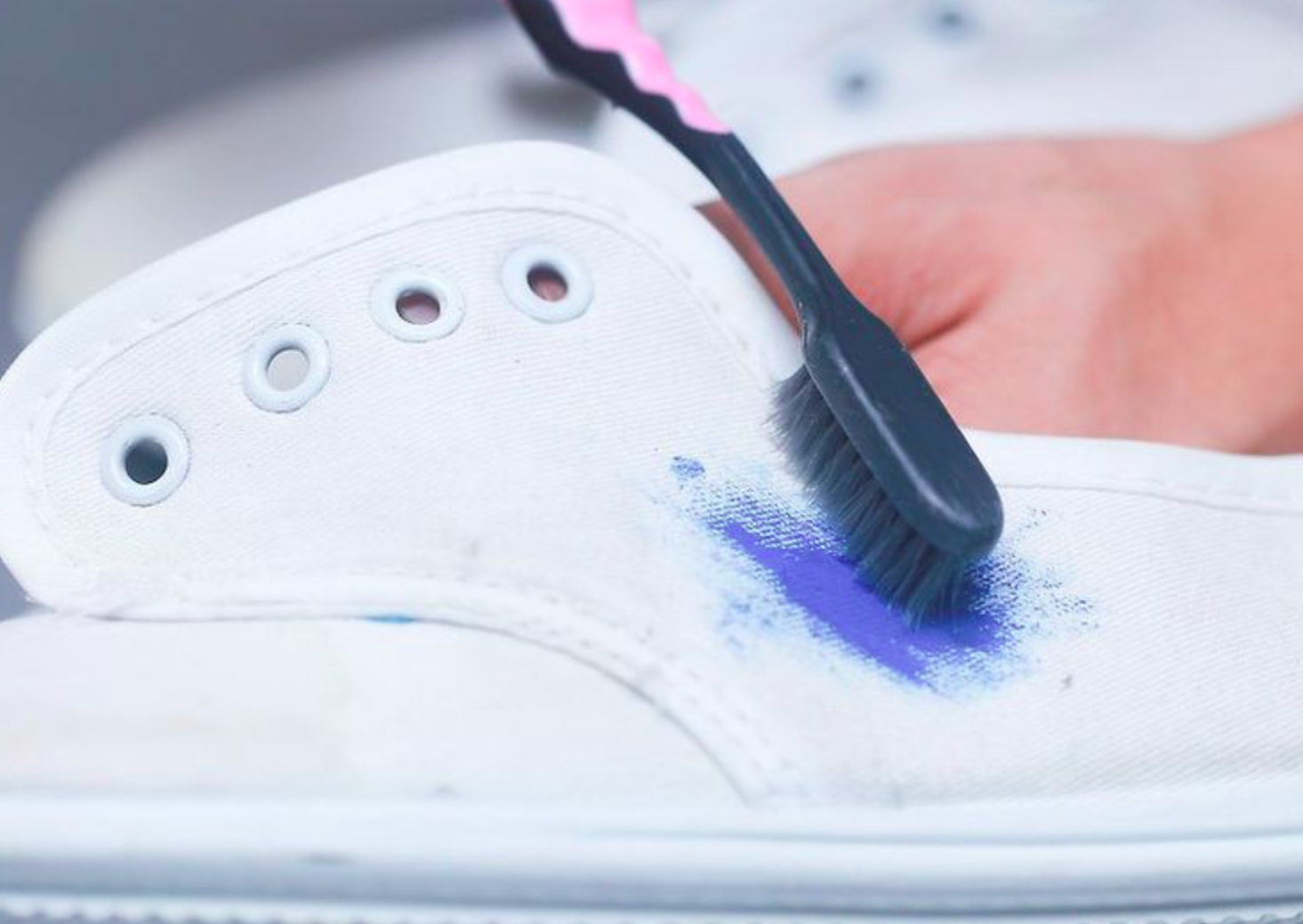Are you an art enthusiast who’s ended up with a splash of acrylic paint on your favorite shoes? Or maybe you’re a parent dealing with a little Picasso who’s turned their footwear into a canvas? Whatever the case may be, getting acrylic paint off shoes can seem like a daunting task, but don’t worry! This comprehensive guide will take you through the steps, tips, and methods to restore your beloved footwear to its original glory.
Understanding Acrylic Paint and Its Bonding Properties
Acrylic paint is a versatile medium popular among artists for its quick-drying nature and vibrant colors. Its water-based formula makes it easy to work with, but this same feature can pose challenges when it comes to cleaning. Once dry, acrylic paint can adhere strongly to various surfaces, including leather, canvas, and synthetic material—making removal tricky.
Why Acrylic Paint Sticks So Well
Acrylic paint bonds to surfaces through a process of water evaporation, leaving behind a polymer film that adheres tightly to the material. This is particularly noticeable on porous surfaces, such as canvas shoes, where the paint can soak in and set more firmly. This bonding is what makes it an excellent choice for artists but a headache for shoe owners.

Real-World Experiences: The Painter and The Parent
To illustrate the struggle of removing acrylic paint from shoes, let’s look at two contrasting experiences.

Case Study 1: The Painter’s Dilemma
Emily, an avid painter, used her favorite canvas sneakers as a mixing palette while preparing for an outdoor art show. After a day of creativity, she discovered that her shoes had absorbed a vibrant mix of colors. Unsure how to clean them without damaging the fabric, she turned to her fellow artists for advice.

Case Study 2: The Parent’s Challenge
Mark, a father of two, found himself facing a similar situation when his son decided to express his artistic talents on a pair of bright white sneakers. With paint splatters covering both shoes, Mark was determined to save them before they became a permanent mess.

Step-by-Step Guide to Remove Acrylic Paint from Shoes
Essential Materials You’ll Need

Before diving into the cleaning process, gather the following supplies:
- Rubbing alcohol
- Dish soap
- Cotton balls or pads
- A soft brush (like a toothbrush)
- Warm water
- A clean cloth
- Plastic wrap (optional)
- Baking soda & vinegar (for stubborn stains)
Step 1: Identify the Shoe Material

Different materials require distinct approaches. Before beginning, check if your shoes are:
- Canvas: Generally more forgiving, but can stain easily.
- Leather or Faux Leather: More sensitive to liquids and require special care.
- Suede: Needs careful handling and specific products.
Step 2: Test a Small Area

Always conduct a spot test in an inconspicuous area before applying any cleaning solutions. Apply a small amount of the chosen solution (like rubbing alcohol) to check for colorfastness or material damage.
Step 3: Remove Excess Paint
Use a soft brush or a cloth to gently remove any excess paint without spreading it further. If the paint is still wet, carefully dab it with a paper towel or cloth.
Step 4: Apply the Cleaning Solution
For Canvas Shoes
- Rubbing Alcohol Method:
- Dampen a cotton ball with rubbing alcohol.
- Gently blot the stained area. Avoid rubbing, which could spread the paint.
- Let it sit for 10-15 minutes, then wipe away with a clean cloth.
- Dish Soap and Water:
- Mix a few drops of dish soap in warm water.
- Dampen a cloth with the solution and gently scrub the area.
For Leather Shoes
- Rubbing Alcohol:
- Use a cotton ball to apply alcohol directly to the stain.
- Blot gently, then wipe with a damp cloth to remove residue.
- Specialized Leather Cleaner:
- If paint persists, consider using a leather cleaner specifically formulated for removing stains.
For Suede Shoes
- Suede Eraser:
- For small spots, use a suede eraser to gently rub away the paint.
- For larger stains, use a soft brush to lift the paint without damaging the nap.
Step 5: Rinse and Dry
After you’ve cleaned the paint, rinse the shoes with a damp cloth to remove any soap or alcohol residue. Allow them to air dry away from direct sunlight, which can cause fading.
Comparison Table: Methods and Results
| Shoe Material | Recommended Method | Pros | Cons |
|---|---|---|---|
| Canvas | Rubbing Alcohol + Dish Soap | Effective on fresh stains | May not work on dried paint |
| Leather | Alcohol + Leather Cleaner | Good for tough stains | Might damage the leather if too harsh |
| Suede | Suede Eraser + Soft Brush | Preserves the material’s texture | Difficult for large stains |
Pro Tips for Prevention and Care
- Prevention is Key: When engaging in craft projects, wear old shoes or consider shoe covers to protect your footwear.
- Act Quickly: The sooner you address a paint spill, the easier it will be to remove.
- Regular Maintenance: Regularly clean and condition your shoes. This will make them less susceptible to stains.
- Use Plastic Wrap: If using solvents, cover the area with plastic wrap to prevent the solution from drying out too quickly.
Product Highlights: Best Products for Acrylic Paint Removal
Rubbing Alcohol
Rubbing alcohol is a household staple that can tackle acrylic paint effectively. It’s inexpensive and widely available.
Leather Cleaners
Brands like Lexol and Bickmore offer specialized leather cleaners that can help lift stains without damaging the material.
Suede Erasers
Brands like Frye and Scotchgard make excellent suede erasers designed specifically for removing stains without harming the nap.
Pros and Cons of Different Removal Methods
Rubbing Alcohol
- Pros:
- Highly effective on both wet and dried paint.
- Evaporates quickly, leaving no residue.
- Cons:
- May damage delicate materials if not used carefully.
Dish Soap
- Pros:
- Gentle on materials.
- Great for light staining.
- Cons:
- Might not work on older, set-in stains.
Suede Erasers
- Pros:
- Specifically designed for suede.
- Preserve the original texture.
- Cons:
- Limited effectiveness on other materials.
Frequently Asked Questions (FAQs)
1. Can I use water to remove acrylic paint from shoes?
Water can help if the paint is still wet. However, once it’s dried, water alone is often ineffective.
2. Will rubbing alcohol damage my shoes?
It can, especially on sensitive materials like leather or synthetic fabrics. Always do a spot test first.
3. How can I remove dried acrylic paint from my shoes?
Dab the affected area with rubbing alcohol and let it sit before gently scrubbing with a soft brush.
4. Are there commercial products for removing acrylic paint?
Yes! Products specifically designed for art cleanup can be effective. Look for paint removers that are safe for fabrics.
5. Is it better to use a cloth or a brush for cleaning?
For most materials, a cloth is preferred to prevent damage, but a soft-bristled brush may be needed for delicate fabrics.
6. Can vinegar be used to remove acrylic paint?
Yes, a mixture of vinegar and baking soda can help lift paint, particularly for stubborn stains.
7. How can I protect my shoes from future stains?
Consider applying a water-repellent spray designed for your shoe type to help repel liquids and stains.
8. Can vinegar and baking soda damage my shoes?
While both are generally safe, combining them can create a reaction that may affect certain materials. Always test on a small area first.
9. How long does it take for rubbing alcohol to work on paint?
Allow it to sit for at least 10-15 minutes before attempting to scrub or wipe the area.
10. Should I seek professional cleaning for tough stains?
If DIY methods fail and the shoes are valuable, consider consulting a professional shoe cleaner.
11. What if the paint won’t come off at all?
If all else fails, it may be time to consider upcycling them into a new project or repurposing them.
Conclusion
Removing acrylic paint from shoes need not be a cause for despair. With the right methods and materials on hand, you can restore your footwear to its former glory. Remember to act quickly, test your cleaning agents, and take preventive measures for the future.
Whether you’re a creative soul or a busy parent, keeping your shoes paint-free can extend their life and maintain their style. Happy cleaning!